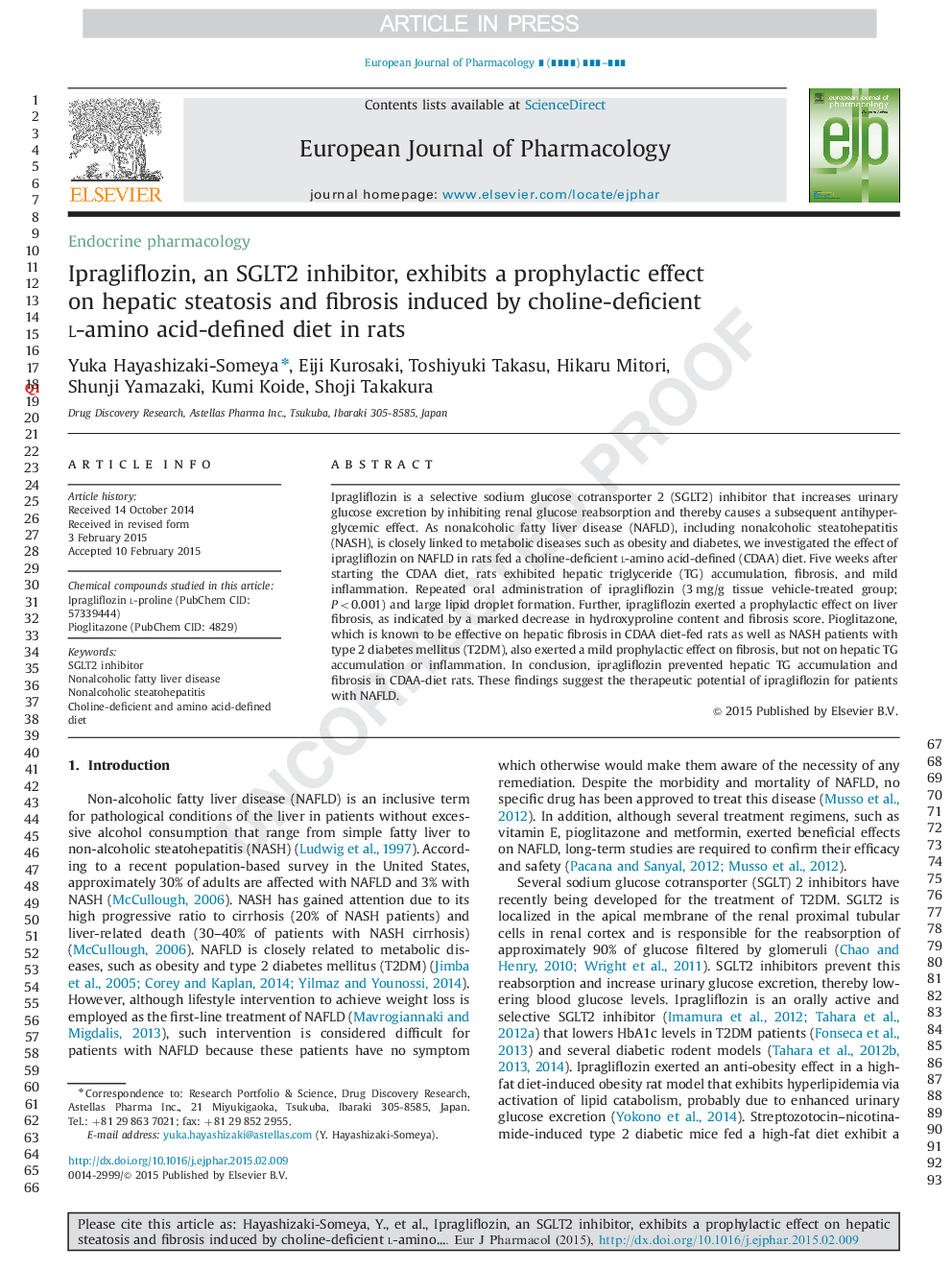| Article ID | Journal | Published Year | Pages | File Type |
|---|---|---|---|---|
| 5827443 | European Journal of Pharmacology | 2015 | 6 Pages |
Abstract
Ipragliflozin is a selective sodium glucose cotransporter 2 (SGLT2) inhibitor that increases urinary glucose excretion by inhibiting renal glucose reabsorption and thereby causes a subsequent antihyperglycemic effect. As nonalcoholic fatty liver disease (NAFLD), including nonalcoholic steatohepatitis (NASH), is closely linked to metabolic diseases such as obesity and diabetes, we investigated the effect of ipragliflozin on NAFLD in rats fed a choline-deficient l-amino acid-defined (CDAA) diet. Five weeks after starting the CDAA diet, rats exhibited hepatic triglyceride (TG) accumulation, fibrosis, and mild inflammation. Repeated oral administration of ipragliflozin (3Â mg/g, once daily for 5 weeks) prevented both hepatic TG accumulation (188 vs.290 mg/g tissue vehicle-treated group; P<0.001) and large lipid droplet formation. Further, ipragliflozin exerted a prophylactic effect on liver fibrosis, as indicated by a marked decrease in hydroxyproline content and fibrosis score. Pioglitazone, which is known to be effective on hepatic fibrosis in CDAA diet-fed rats as well as NASH patients with type 2 diabetes mellitus (T2DM), also exerted a mild prophylactic effect on fibrosis, but not on hepatic TG accumulation or inflammation. In conclusion, ipragliflozin prevented hepatic TG accumulation and fibrosis in CDAA-diet rats. These findings suggest the therapeutic potential of ipragliflozin for patients with NAFLD.
Keywords
Related Topics
Life Sciences
Neuroscience
Cellular and Molecular Neuroscience
Authors
Yuka Hayashizaki-Someya, Eiji Kurosaki, Toshiyuki Takasu, Hikaru Mitori, Shunji Yamazaki, Kumi Koide, Shoji Takakura,
